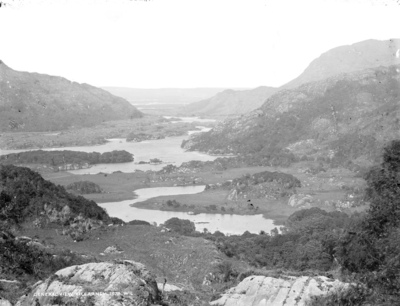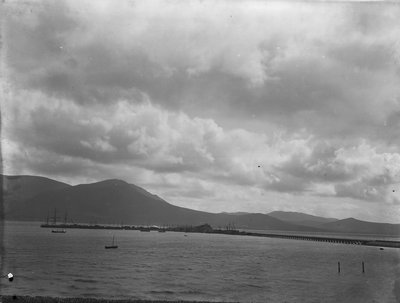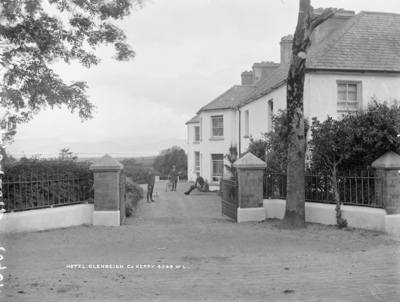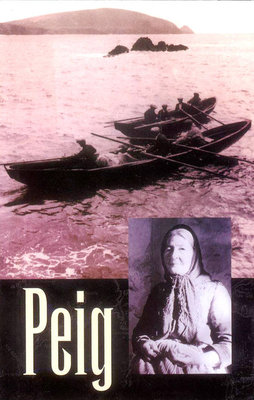What was Kerry like in the early 20th century?
View the photo galleryKerry in 1911 was a county of majesty and of misery. On the one hand, there was the majesty of its scenery, its wild and varied landscape which pushed out into the Atlantic Ocean in a series of peninsulas. Those peninsulas, and the islands off them which marked the most westerly point in Europe, contained a unique heritage of ecclesiastical ruins, archaeological remains and popular folklore which, as well as its scenery, made the county a prime destination for tourists. On the other hand, there was the misery of endemic poverty, of a subsistence existence in the countryside and along the coasts which occasionally strayed close to famine, and which forced generations of Kerry people to leave in search of a basic living.
The scale of emigration from the county means that the story of Kerry in 1911 is, in some measure, the story of those who no longer lived there. Kerry had the highest annual rate of emigration from Ireland in the twenty years up to 1911. According to the 1841 census, the population of the county was as high as 295,000. By 1911, the census was recording a decline to just 160,000 people. Even since the previous census had been taken in 1901, the population had fallen by more than 6,000, and it would continue to fall for much of the twentieth century. Many of those who left ended up in Kerry enclaves in the cities of England and America.
The departure points for most Kerry people were the railway stations which dotted the county. Those stations also served to bring people into the county. In 1853, Killarney was connected to the main Dublin-Cork line at Mallow, and by 1911 almost the entire county had been opened up, with railway lines laid as far as Dingle, Cahirciveen and Kenmare. Life in Kerry was changed by the arrival of the railways. The extent to which it transformed the county by greatly increasing the number of tourists can be seen in the development of railway-owned hotels at Caragh Lake, Parknasilla, Waterville, and elsewhere.
The county town, Tralee, was also a tourist destination, though never on the same scale as Killarney. Tralee dated from Anglo-Norman times and had developed in the following centuries as a significant market town. It held impressive Georgian buildings, a classical courthouse, and a workhouse which was the largest in the county. Of similar importance was the lunatic asylum in Killarney. A report from an inspector of the Congested Districts Board on social conditions in the towns of Kerry attributed the high numbers in the Killarney lunatic asylum to the numbers of grocery shops that sold whiskey, and to the fact that other concoctions were sold as whiskey. In towns all across the county, the scale of drinking was a cause for concern. It was noted that in Sneem both men and women drank excessively on fair days, and that in Caherciveen there were 60 public houses, but no coffee stall.
The drinking on fair days emphasised the extent to which Kerry was dependant on agriculture (even more than on tourism) for income. Most of the south and west of the county fell within the remit of the Congested Districts Board: the life of small farming families in Kerry was barely above subsistence level. Those in coastal areas also had fishing, but the children raised in these areas had little immediate prospect of gaining employment in a county where industrial development was largely unknown.
The most important institution in the county was the Catholic church. Kerry was one of just seven of the 32 counties in Ireland where Catholics made up more than 95 per cent of the population. This amounted to more than 155,000 people. By contrast there were just 3,623 Church of Ireland members, 251 Methodists, 249 Presbyterians, 26 Jews, 67 members of various other assorted religions, and two people who refused to disclose what, if any, religion they held.
For all that the county was largely uniform in religion, it was also a place of considerable diversity. In part, this was a matter of geography and the sheer scale of the county, but it was also a matter of culture. There was considerable difference between the culture of the low-lying lands of north Kerry and that of the peninsulas of the south.
It might even be considered that the only real unifying force in the county was the emergence in Kerry of the top gaelic football team in Ireland. For most of the first two decades of the history of the Gaelic Athletic Association after its foundation in 1884, Kerry had enjoyed little success on the football field. Indeed, it actually won an All-Ireland hurling championship in 1891, before it managed to win a football championship. That had all changed by 1911. In the early years of the century the place of Kerry in gaelic football had been transformed by a series of high-profile matches with Kildare which drew record crowds. In 1911 it was in the middle of an even more engaging struggle with Louth. Ultimately, Kerry saw off Louth, just as they had seen off Kildare. This was a pattern which was repeated through the following decades. Other counties bloomed before withering away; Kerry became perennial contenders for national honours. By the end of the twentieth century the county would stand undisputed as the most successful football county in Ireland.

GAA001: All-Ireland Champion Kerry football team, 1903
From King in a Kingdom of Kings, Tom Looney, 2008
If football was becoming central to how Kerry was perceived, other aspects of the culture of the county were also of huge importance. Kerry had the 4th highest percentage of Irish-speakers of any county in Ireland. It stood behind Galway, Mayo and Waterford. Nonetheless, more than 60,000 Kerry people , or 38% of the people of the county, said they were able to speak Irish. Many of these lived in the Gaeltacht areas of west Kerry where Irish remained the spoken language of the people.
The islands off the coast of Kerry were central to its image as a repository of an ancient, distinctive culture. Most important were the Blasket Islands, soon to be famed for the writing of several of its inhabitants - Muiris Ó Súilleabháin, Tomás Ó Criomhthainn and Peig Sayers. In an archipelago of six islands (one of which, Tiaracht, is the most westerly point in Europe), the most important settlement was An Blascaod Mór. Unlike most places in Ireland, the population of that island increased after the Great Famine and reached 176 shortly after 1911. After World War I, waves of emigration destroyed the island community and the last islanders were evacuated in the 1950s.
Valentia Island was also unique, but for other reasons. By 1911 it had, for more than 50 years, been the home of cable operators who connected Europe with America. The island became home to the families of the highly-skilled operators who manned the cable company. Children of men such as Robert R. Mackey and Arthur James Gravers inherited the work of their English-born fathers. It was work which allowed for easier communications between the people of the county and the tens of thousands of Kerry men and women who lived outside their home county in 1911 and who would never return.








